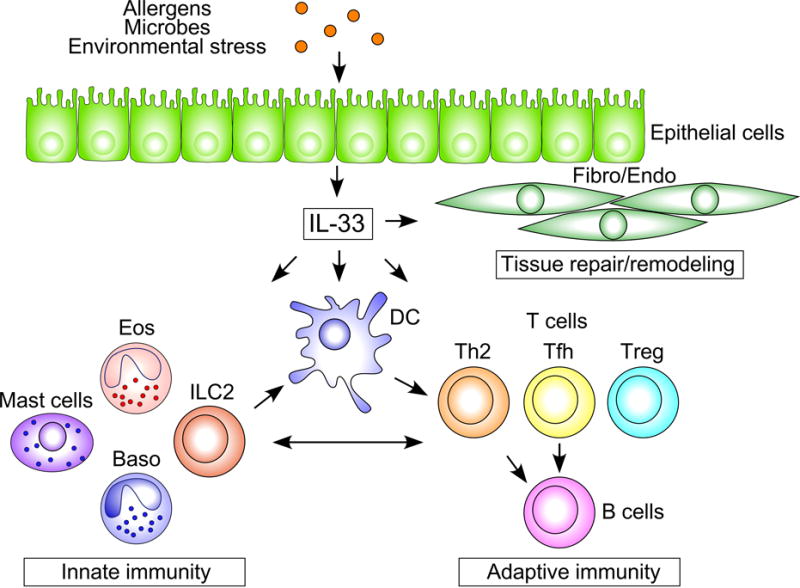Figure 2.

The roles of epithelial IL-33 in mucosal immune responses. Exposure to allergens, microbes and perhaps environmetal stress induces IL-33 release from airway epithelial cells. IL-33 activates the innate immune cells, including ILC2s, basophils, eosinophils, and mast cells to drive type 2 inflammation. IL-33 also activates DCs and CD4+ T cells and drives proliferation and differentiation of Th2, Tfh and Treg cells and production of antibody by B cells. Note that a bidirectional cross-talk exists betewen the cells involved in the innate immunity and adaptive immunity. Chronic activation of these immune responses results in changes in structural cells, such as epithelial cells, fibroblasts and endotherial cells, and promotes tissue repiar and remodeling. Fibro; fibroblasts, Endo; endothelial cells, Eos; eosinophils, and Baso; basophils.
